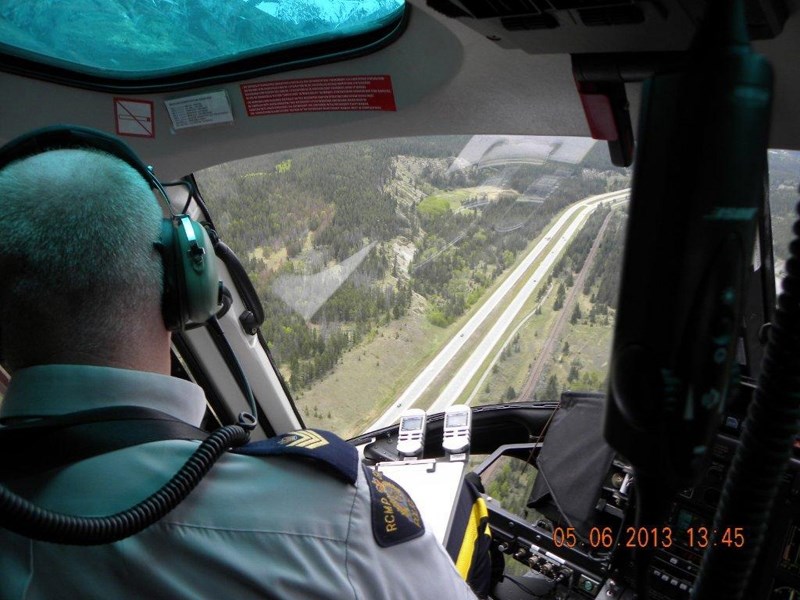The Mounties' Aircraft Traffic Enforcement Program will continue until the “snow flies” and will “absolutely” return next spring, said the officer in charge of the RCMP's K Division traffic services.
Although Superintendent Howard Eaton could not provide any statistics on how many tickets or charges were handed out to speeders on the province's highways this summer through the program, he said having an aircraft in the air, or even the possibility of an aircraft overhead, searching for speeding vehicles helps makes Alberta's roads safer.
“The biggest impact that it makes is that the people are thinking that the plane could be up there and oftentimes it makes people slow down,” Eaton said, adding most people driving over the speed limit aren't intentionally breaking the law but instead are not paying attention to their speed.
“So when you go by and you see the signs, you see the lines on the road, you think ‘I'd better slow down.' It's a reminder to watch your speed.”
Through the program, an RCMP 2007 Eurocopter AS350 A-Star helicopter monitors the province's busier primary highways such as 1, 2, 16 and 63 and secondary highways such as 22 and 43.
The helicopter flies at an altitude of roughly 450 metres and when the police officers aboard the aircraft spot a vehicle moving faster than others on the road, they will wait for that vehicle to cross a series of four special lines painted on the highway that are exactly 500 metres apart.
“Even at that altitude, it's amazing how quickly a speeding vehicle stands out from the rest because you're watching vehicles come at you and it's really obvious one is going faster than all the rest,” he said.
Using a stopwatch, police will time how long the vehicle takes to cross the lines.
The less time it takes a vehicle to travel across the 500-metre distance, the faster the vehicle is moving.
If a vehicle is speeding, the helicopter crew will inform RCMP ground units that will pull the vehicle over at the end of the section of highway where the lines are painted.
Police aboard the helicopter will then confirm with the ground units if they have pulled over the right vehicle.
Lynden Fischer, Alberta Transportation's operations manager in Red Deer, said there are three sections of painted lines for the program on Highway 2 in this area.
They are located near the highway's interchanges with Highway 27 near Olds, Highway 54 near Innisfail and Highway 582 near Didsbury.
The RCMP began using its own aircraft to enforce speed limits in Alberta in 1968 but the program was suspended in the early 1980s due to a lack of available police aircraft.
Private aircraft were used when the program was reintroduced in the late 1980s but the high cost of the project again forced the program to shut down.
In 2009, the concept of aerial traffic enforcement using RCMP aircraft was considered again and aircraft started patrolling the Trans-Canada Highway between Calgary and the British Columbia border.
Last year, the project expanded and as of 2013, police aircraft patrol up to 50 locations across the province and there are 25 members of the RCMP and the Alberta sheriffs trained in aerial traffic enforcement.
Eaton said because the RCMP is using its own aircraft, which have to fly anyways for other reasons, there are no extra costs involved in carrying out highway monitoring efforts and so the program will continue.
“The main thing is we're using our own aircraft. Prior to that it was all charter,” he said. “There's really no cost to us. The aircraft is up anyways, the pilots have to maintain their hours so they use it as a training thing for them to go out and fly for an hour or two and do some traffic work.”
The program aims to send up about three enforcement missions a month focused on various parts of the province, Eaton added.
Since it is one of the busiest highways in the province, especially in the Calgary-to-Red Deer corridor, Highway 2 receives a great deal of attention from the program, he said.
While the program will finish this year in late fall or early winter, Eaton said motorists can expect to see the RCMP's eye-in-the-sky again in the spring.



